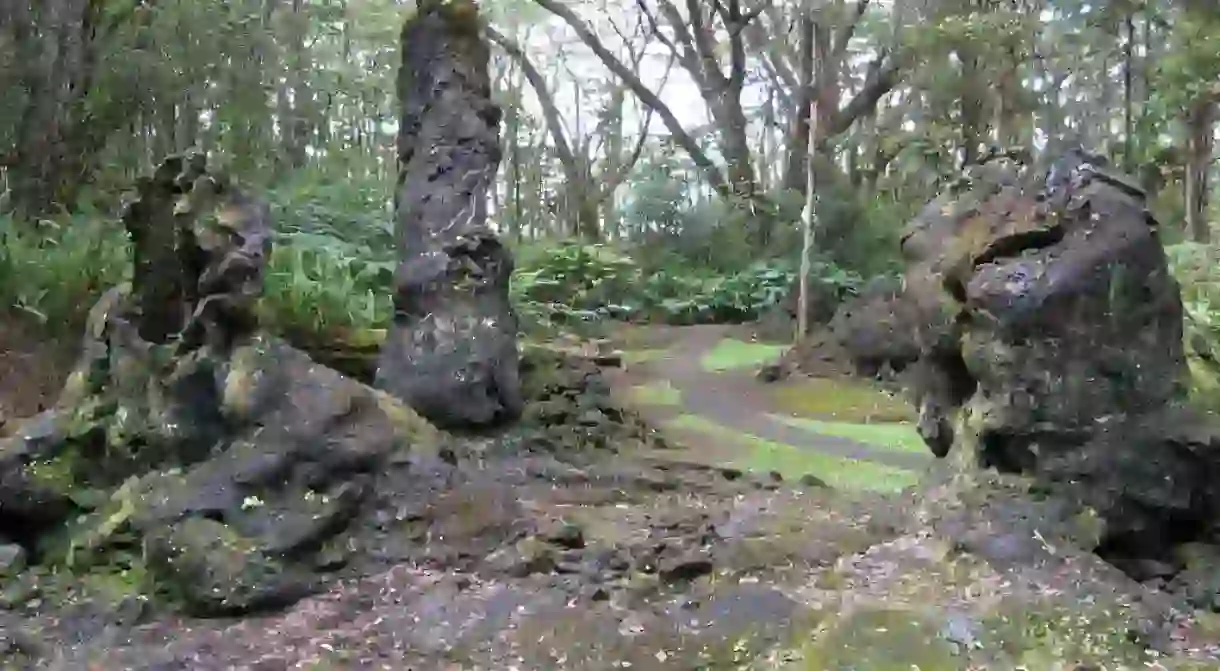What are Hawaii's Lava Trees?

With the amount of volcanic activity throughout Hawaii’s treasured history, there are bound to be some natural marvels found among the islands. These crisp, almost petrified lava trees are one of the Big Island’s natural wonders. Here’s a guide to what they really are.
Lava flow
There is a certain formula to creating a lava tree and Hawaii has done it to perfection. The temperatures and environment are key.
During a volcanic eruption, like that of the Kilauea volcano which has led to the evacuation of 1,700 local residents, the lava flow will head downward, towards the water. As the sliding heat makes contact with a tree, something very interesting happens.

You would be forgiven for thinking that the lava would completely incinerate the trunk and branches to clear the path. Instead, the moisture inside of the tree reacts to the lava by cooling it, making it a barrier from the hotter lava around.
If, and only if, the hotter lava is able to continue moving down and flow around the tree, the tree is protected from becoming obsolete. As this cools, it become a shell. And even with the inside wood burned to hollowness, these trees can stay standing for years, some even able to survive and continue their growth.

Lava Tree State Monument
The best example of this marvel and a sight to absolutely see is just south of Pāhea on the Big Island.
Nearby Hawaii Volcanoes National Park, there is a rich forest growing where a path of lava passed many years ago. Among the 17.1 acres of greenery and wildlife, visitors are able to examine the bark textures and hollow trunks of the lava trees still standing today.
The lava came down from Kilauea in 1790, measuring about 11-feet deep. You can tell this by the height of the lava trees that are still upright.
Not only are they a fantastic specimen for learning about natural occurrences and the areas’ history, but getting the chance to take a long walk among them is, in itself, absolutely mesmerizing.














